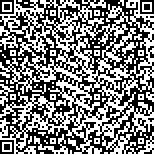王碧茹,王丝蕊,苗国富,等.缺血性脑卒中后认知障碍患者静息态脑功能网络的拓扑属性分析[J].中华物理医学与康复杂志,2022,44(11):982-988
扫码阅读全文

|
| 缺血性脑卒中后认知障碍患者静息态脑功能网络的拓扑属性分析 |
|
| |
| DOI:10.3760/cma.j.issn.0254-1424.2022.11.005 |
| 中文关键词: 缺血性脑卒中后认知障碍 图论 拓扑属性 |
| 英文关键词: Ischemic stroke Cognitive impairment Graph theory Brain topology |
| 基金项目:国家重点研发计划(2018YFC2002302) |
|
| 摘要点击次数: 4127 |
| 全文下载次数: 5095 |
| 中文摘要: |
| 目的 探究缺血性脑卒中后认知障碍(iPSCI)患者大脑静息态功能网络拓扑属性的改变及其与认知障碍的关系。 方法 招募iPSCI患者21例,设为iPSCI组,另招募性别、年龄和受教育程度与患者组相匹配的健康志愿者21例,设为对照(HC)组。采集2组受试者的3D-T1结构数据和静息态脑功能数据,利用图论法分析脑网络拓扑属性的变化,对2组受试者各脑区的度中心性(DC)、中介中心性(BC)和全局拓扑属性采用两独立样本t检验进行比较,并对发生显著变化的拓扑属性与蒙特利尔认知评估量表(MoCA)评分和简易精神状态检查量表(MMSE)的相关性进行Spearman相关性分析。 结果 iPSCI组的DC较HC组显著增高的脑区有右侧眶部额中回、右侧海马、右侧丘脑,差异均有统计学意义(P<0.05);较HC组显著降低的脑区有左侧中央沟盖、左侧中央后回、左侧缘上回、左侧角回、左侧尾状核、右侧尾状核、左侧豆状壳核、左侧颞横回、左侧颞上回和左侧颞极,差异均有统计学意义(P<0.05)。iPSCI组的BC较HC组显著增高的脑区有左侧眶部额中回、左侧楔叶和右侧楔前叶,差异均有统计学意义(P<0.05);较HC组显著降低的脑区有左侧尾状核、左侧颞极:颞上回、左侧颞下回,差异均有统计学意义(P<0.05)。与HC组比较,iPSCI组的最短路径长度(Lp)和标准化最短路径长度(λ)的曲线下面积(AUC)显著增加,标准化聚类系数(γ)和小世界指数(σ)的AUC显著减小,差异均有统计学意义(P<0.05)。左侧中央沟盖、左侧中央后回、左侧尾状核、左侧颞横回、左侧颞上回、左侧颞极的DC与MoCA评分和MMSE评分呈中等正相关(r>0.4,P<0.05);左侧尾状核和左侧颞极的BC与MoCA评分和MMSE评分呈中等正相关(r>0.4,P<0.05)。 结论 认知功能障碍主要与语言相关的脑区和尾状核节点属性的下降密切相关。额叶、海马、丘脑、纹状体和默认网络拓扑属性的重构可能是iPSCI后自我修复机制引起的。虽然iPSCI患者的脑功能网络仍具有小世界属性,但尚处于低效能、高成本的状态。 |
| 英文摘要: |
| Objective To explore any changes in the topology of the brain′s resting-state functional networks after an ischemic stroke causing cognitive impairment (iPSCI) and their relationship with the impairment. Methods Twenty-one patients with impaired cognition after a stroke were recruited into an iPSCI group, and 21 healthy counterparts matched in gender, age and the education level formed the control (HC) group. Three-dimensional T1-weighted anatomical images and resting state functional magnetic resonance images of all of the subjects were collected and any differences in brain network topology were analyzed using graph theory. The degree of centrality (DC), between centrality (BC) and the global topological properties of each brain region were compared using independent-sample t-tests. Spearman correlation coefficients were computed to analyze the significance of any correlation between topology differences and Montreal Cognitive Assessment Scale (MoCA) or Mini-Mental Status Examination (MMSE) scores. Results Compared with the HC group, a significant DC increase was observed in the orbital part of the right of middle frontal gyrus (ORBmid.R), the right hippocampus (HIP.R), and the right thalamus (THA.R). There was a significant decrease in the left Rolandic operculum (ROL.L), the left postcentral gyrus (PoCG.L), the left supramarginal gyrus (SMG.L), the left angular gyrus (ANG.L), the left and right caudate nucleus (CAU.L and CAU.R), the putamen of the left lenticular nucleus (PUT.L), the left Heschl gyrus (HES.L), the left superior temporal gyrus (STG.L), and the temporal pole of the left superior temporal gyrus (TPOsup.L). Compared with the HC group, the brain regions of the iPSCI group in which the BC had increased significantly were the orbital part of the left middle frontal gyrus (ORBmid.L), the left cuneus (CUN.L), and the right precuneus (PCUN.R). DC was significantly decreased in the left caudate nucleus (CAU.L), the left temporal pole of the superior temporal gyrus (TPOsup.L), and the left of inferior temporal gyrus (ITG.L). Compared with the HC group, the area under the receiver operating curve (AUC) of the shortest path length (Lp) and the normalized Lp (λ) of the iPSCI group increased significantly, and the AUC of the normalized clustering coefficient (γ) and small-worldness (σ) decreased significantly. The DCs of the ROL.L, PoCG.L, CAU.L, HES.L, STG.L and TPOsup.L regions showed moderate positive correlation with the MoCA and MMSE scores (r>0.4), as did the BC of the CAU.L and TPOsup.L regions (r>0.4). Conclusions Cognitive impairment is mainly associated with decreased nodal properties in the brain regions related to language and in the caudate nucleus. The topology of the frontal lobe, hippocampus, thalamus, striatum and default networks may self-repair after an iPSCI. The brain′s functional network after an iPSCI still has small-world properties, but with low efficiency and high cost. |
|
查看全文
查看/发表评论 下载PDF阅读器 |
| 关闭 |
|
|
|